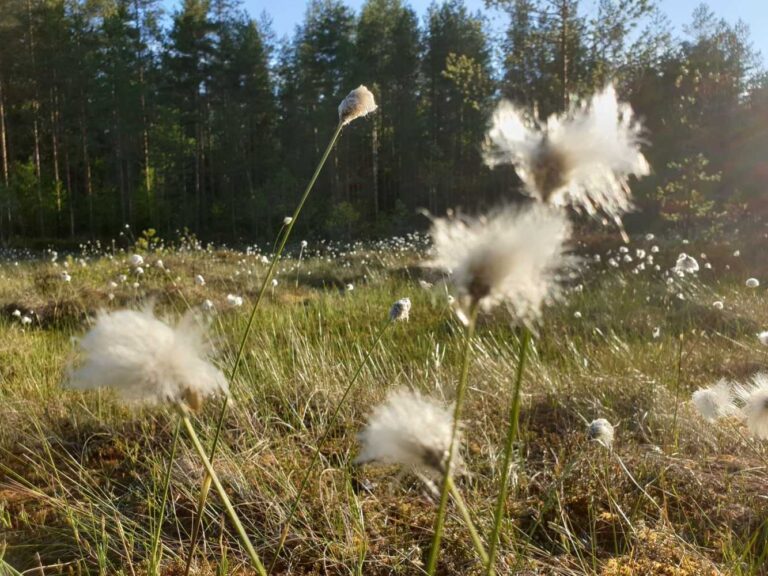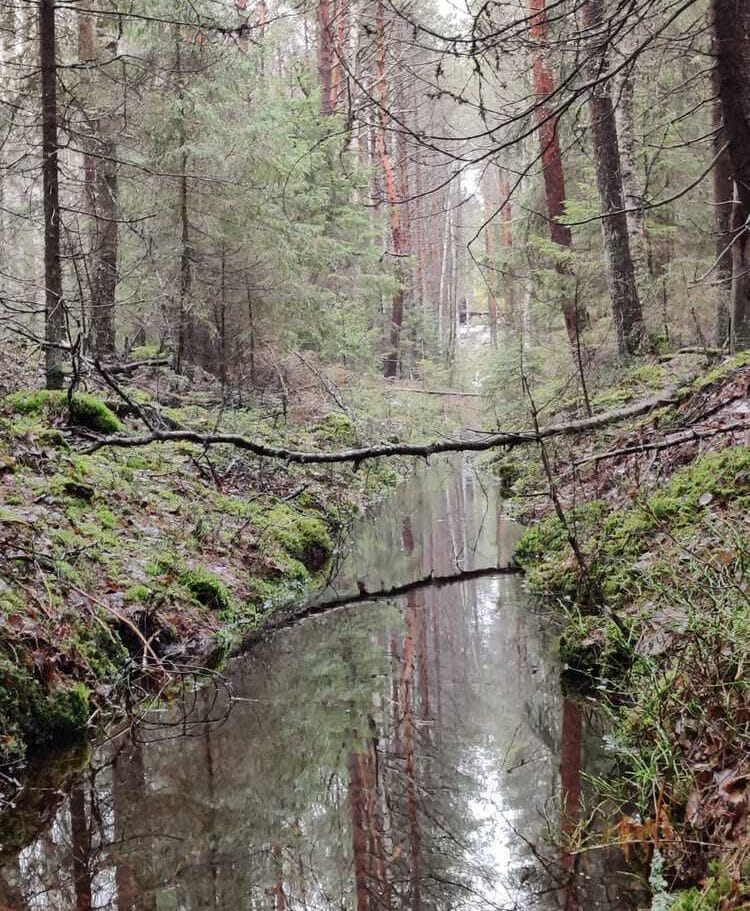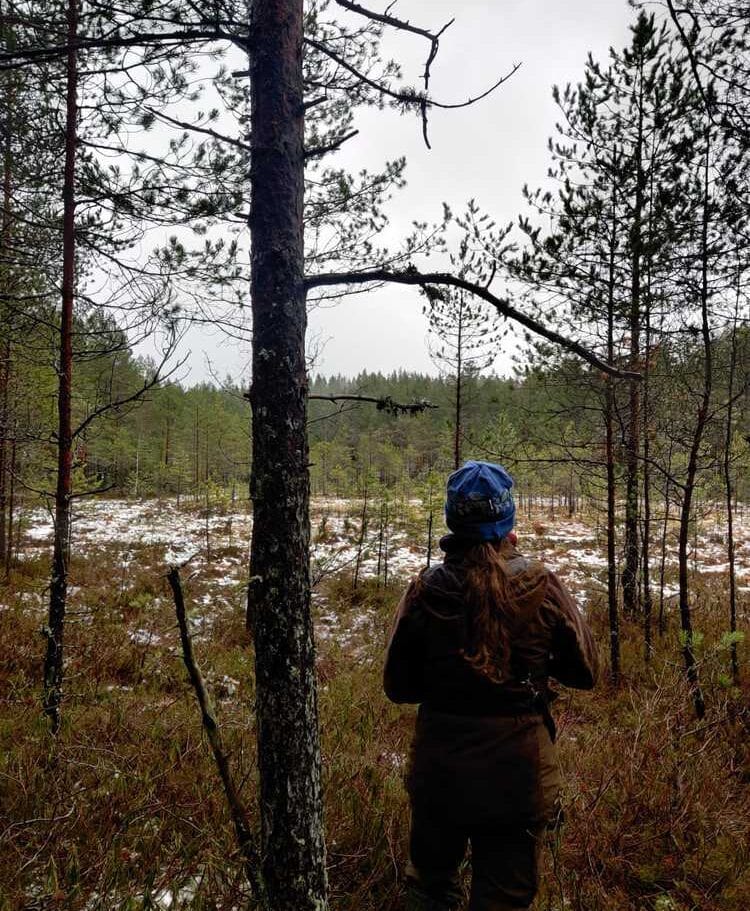Restoring your own bog as a climate measure
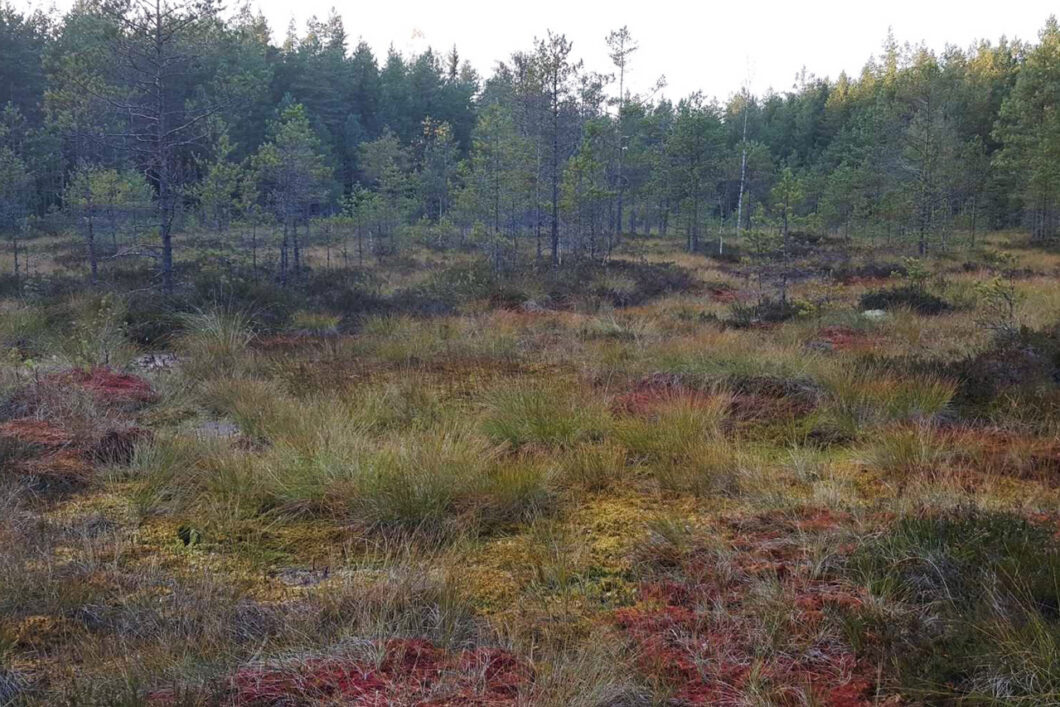
In 2018, we were thinking about options for reducing our company’s carbon footprint. One of the most interesting options was the protection and restoration of bogs. It would take place in Finland and the climate effects in the future would be significant. In addition, restoration would significantly promote biodiversity.
After familiarizing ourselves with the topic, the restoration of Haukansuo, located on our own lands, came to mind. From there the thought sprang into action!
The bog is an efficient carbon store
The bog efficiently binds CO2. One hectare of bog binds about a ton of carbon dioxide per year. A drained swamp, on the other hand, leaks a good five tons of carbon dioxide into the atmosphere per year. According to one estimate, about ten centimeters of peat binds the same amount of carbon dioxide as all the trees of a full-grown forest. There must be a lot more than ten centimeters of peat in the swamp.
There are a bewildering number of bogs in Finland. It is estimated that 1/3 of Finland was originally a swamp. The name of our country describes the harsh history of the land – Finland = Suomi, swamp = suo. Swamps are Finland’s largest carbon store. Done at the right scale, restoring bogs could be a major solution to our climate crisis.
The area of Haukansuo to be restored would be about six hectares. Using a Hiilipörssi emission calculator, the restoration of Haukansuo could mean estimately 10,000 – 15,000 kg of CO2 emissions per year. Without the restoration of the bog, we have reduced the carbon footprint of Hawkhill’s business below 10,000 kg of CO2 emissions per year in 2021. After the restoration, we would bind more emissions with our own actions than what our entire business causes to the environment.
The climate effects of the bog restoration vary depending on the type of bog or wetland to be restored.
Restoring the bog is important for biodiversity
Many species of organisms from insects to forest fowls live and enjoy themselves in the swamps. Nature is very dear to us and therefore it is important that we protect the diversity of nature through our own actions. When the water economy of the bog is restored by reconstruction, it enables the original species and organisms to return to the area.
There are many ways to restore a drained bog
Like all good projects, this one started by googling. I quickly found two good reference publications: Matti and Ari Aallokas’ ‘Guide to the Restoration of Bogs as Handicraft’ and Parks and Wildlife, Finland’s ‘Guide to the Restoration of Drained Bogs’. (Both publications only in Finnish).
The bog can therefore be restored or drained using crafts manually or using an excavator by blocking the ditches. Before hitting the shovel into the turf, we briefly consulted Matti Aallokas by phone. We investigated the matter further and took upon Matti’s good advice. In the end, Matti and Helena Lunden from Park and Wildlife, Finland came to get acquainted with our bog and its restoration potential.
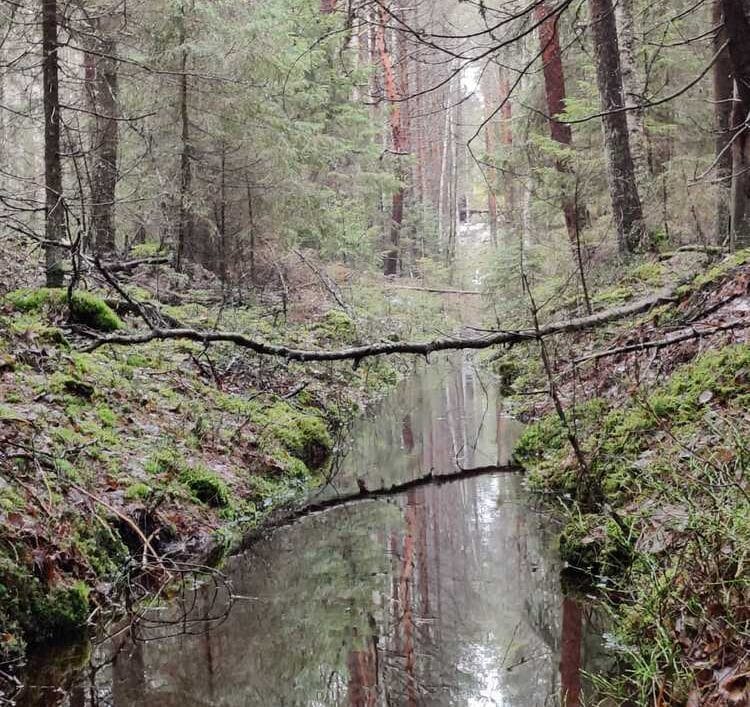
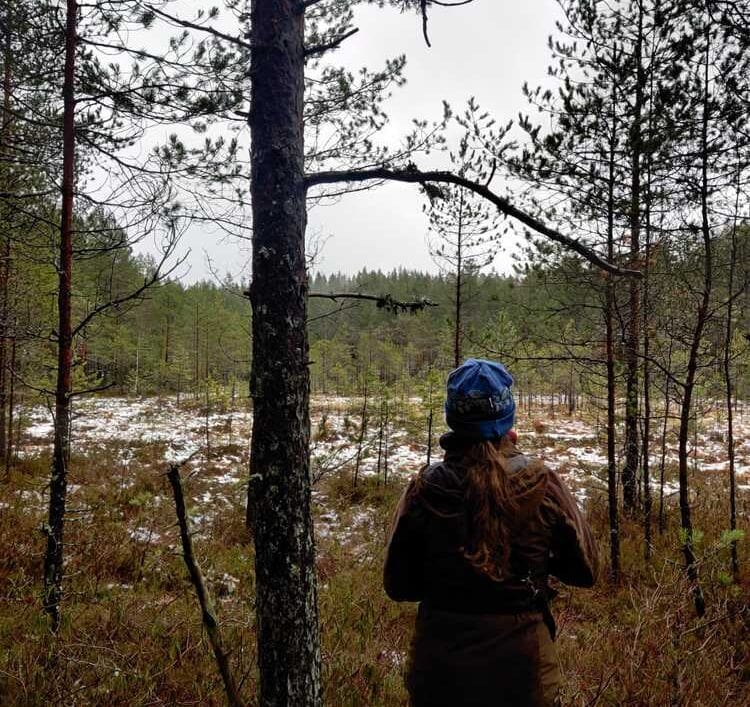
After the wars, bogs were drained in Finland with a brisk hand. As much production forest as possible was needed to get the wheels of the economy turning and the war debts to be paid. Hawkhill’s Haukansuo has also been drained after the wars, and the drainage was brought to its final shape between 1958−1972. Today, the bog is rarely drained, and even the restoration of the ditches has lost its luster. Swamps are starting to take over the area again.
Deep, straight ditch lines cut the swamp criss-cross.
What is done in practice?
The Park and Wildlife, Finland and the The Centre for Economic Development, Transport and the Environment (ELY Centre) familiarized themselves with our site and we agreed on the restoration of the bog planned by The Park and Wildlife, Finland and financed by the ELY Centre. After this, a restoration plan was implemented, based on which the ditches of our swamp will be filled with an excavator during 2023.
The trees must first be cut down from the ditch lines so that the excavator can move along the lines more easily. Our swamp is partially forested, and the biggest trees will not survive the rise in the water level caused by the restoration. A little over three years ago, improvement felling was planned for the forest in the swamp area, so that the trees would have room to grow. Therefore, we decided that the improvement felling is to be carried out before the restoration of the bog. The felling will focus especially on the forest that would not survive the restoration alive. In this way, part of the larger logs can be used as sawn timber and the carbon in them is kept bound.
The forest work required by the restoration (ditch lines and thinning felling) will start during February 2021. The restoration work itself will be carried out during 2021 and early 2023.
More information: +358 50 346 9441 / Matti Ala-Outinen
-Annu, Kaisa and Matti
